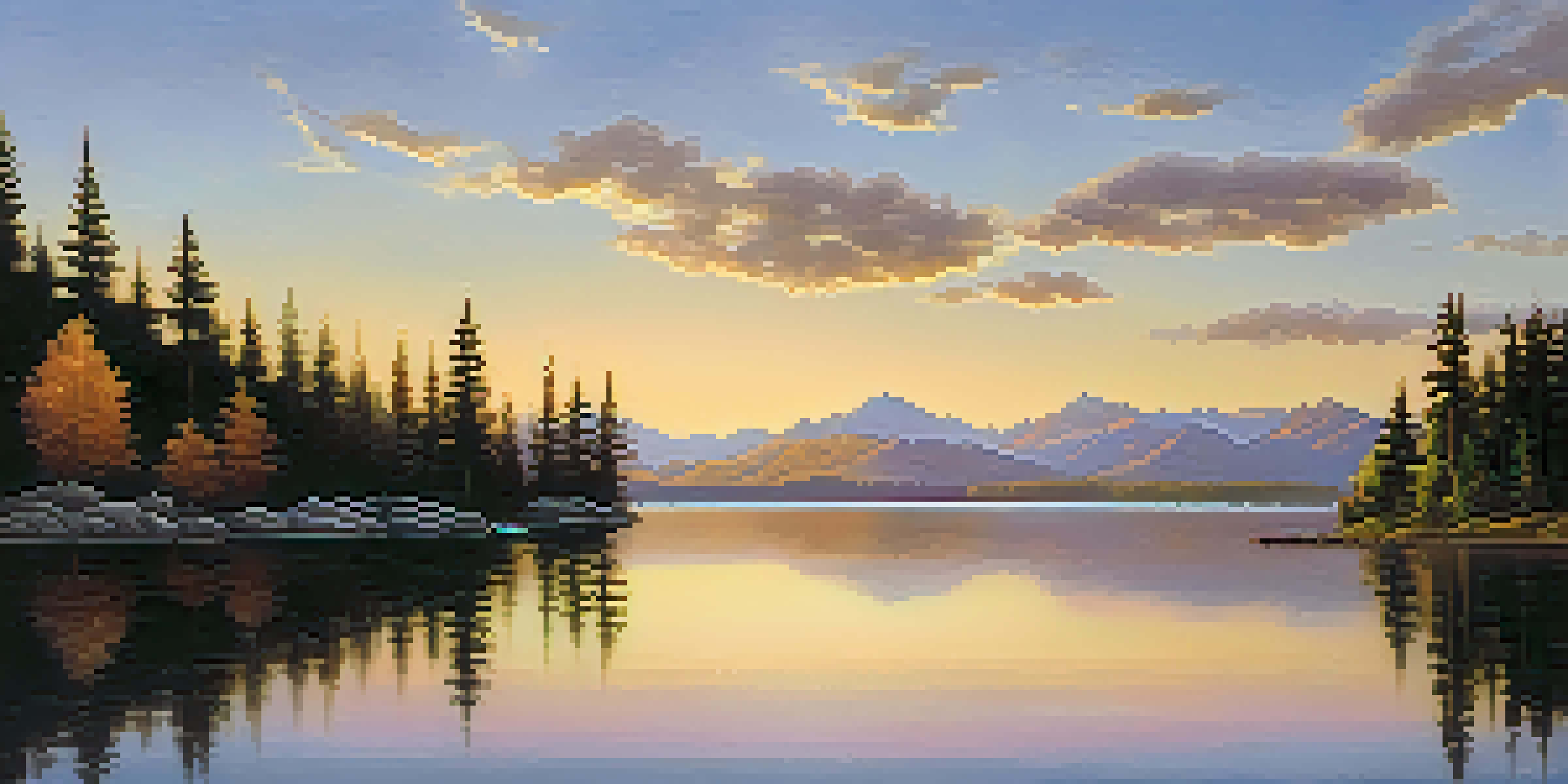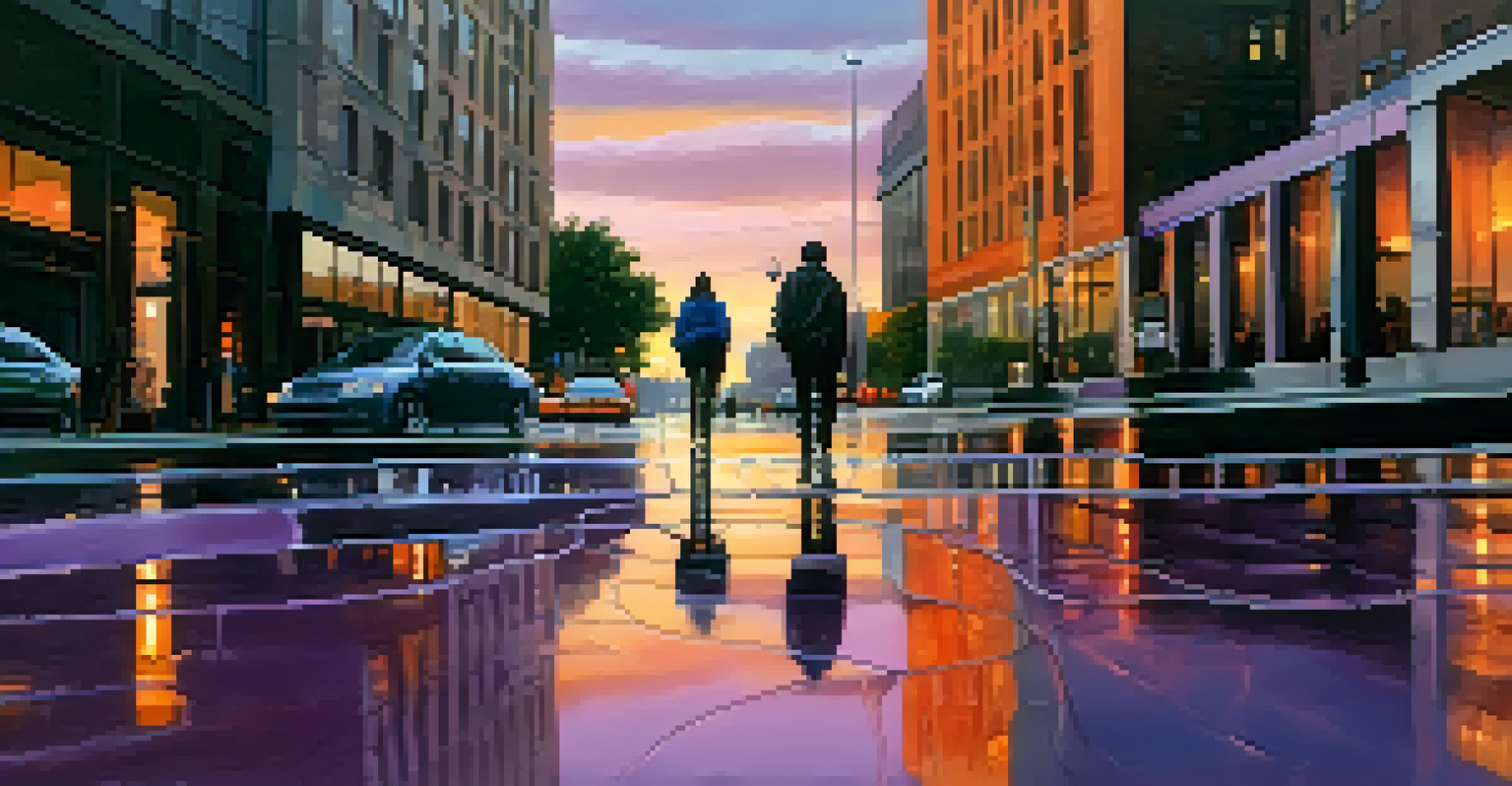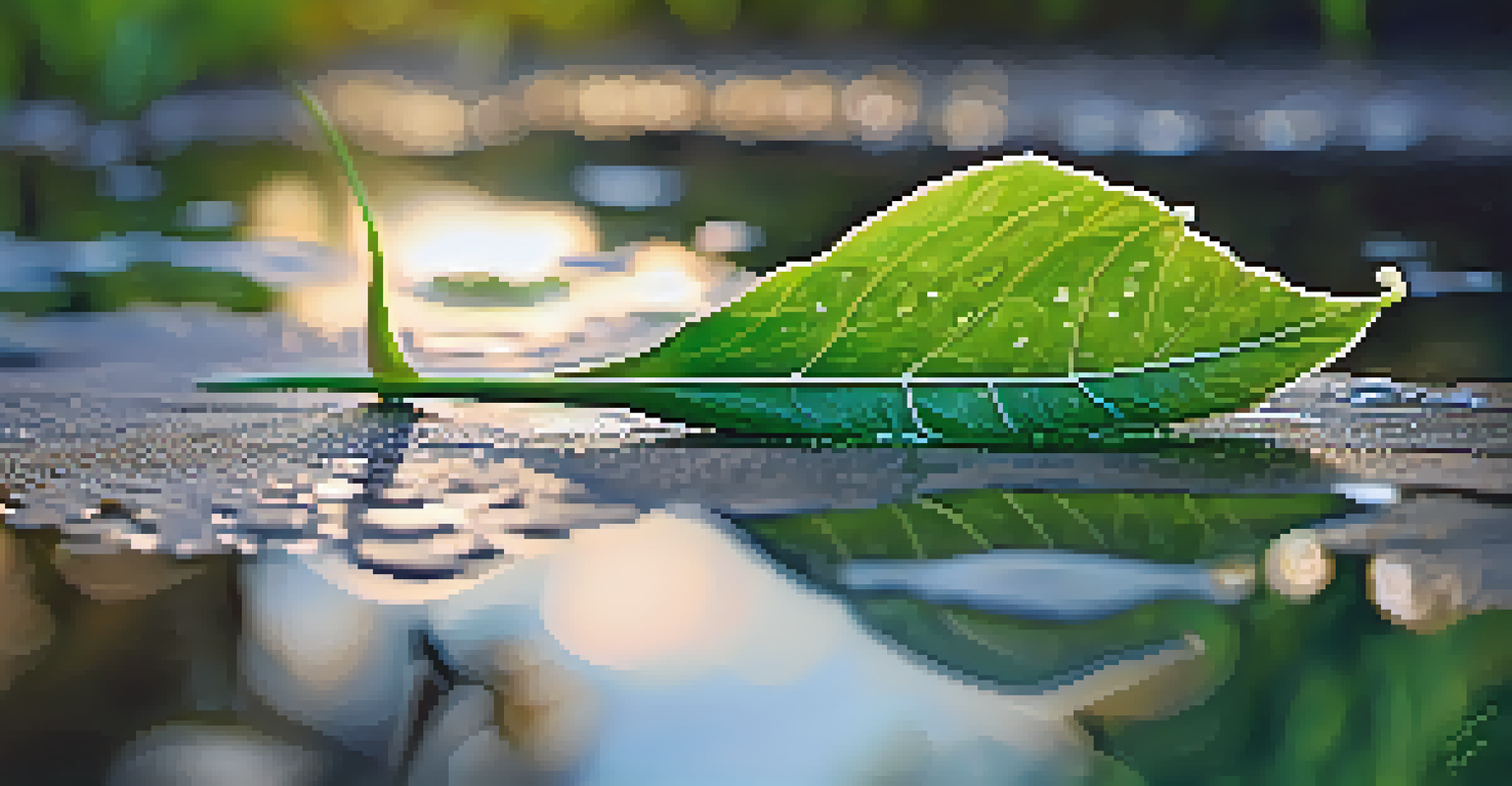Capturing Reflections: Photography Techniques for Travelers

Understanding Reflections in Photography
Reflections can add depth and intrigue to your travel photos, transforming ordinary scenes into striking visuals. When light bounces off surfaces like water, glass, or shiny objects, it creates reflections that can enhance your composition. Understanding how reflections work and where to find them is key to capturing those stunning images.
Photography is the story I fail to put into words.
Think of reflections as nature's way of providing a second canvas. They can mirror landscapes, buildings, and even people, creating a sense of symmetry that often draws the viewer's eye. For example, a calm lake can perfectly reflect the surrounding mountains, offering a breathtaking view that’s just waiting to be photographed.
To get the most out of reflections, consider your surroundings and the time of day. Early mornings or late afternoons often provide the best lighting for capturing reflections, as the sun's angle enhances colors and details in both the reflection and its source.
Choosing the Right Location for Reflection Shots
The right location can make all the difference when it comes to capturing reflections. Look for bodies of water, such as lakes, ponds, and even puddles, which can provide beautiful mirrors for your images. Urban settings also offer a wealth of reflective surfaces, like glass buildings and shiny sculptures, perfect for creative compositions.

Consider visiting popular tourist spots during off-peak hours to avoid crowds and capture cleaner reflections. For instance, early morning at a famous monument can offer a serene view with minimal human interference, allowing the focus to remain on the reflection. This can often lead to unique perspectives that stand out from typical tourist photos.
Enhance Photos with Reflections
Reflections can transform ordinary scenes into striking visuals by adding depth and intrigue.
Don't overlook the potential of everyday locations. A simple park or a quiet street after rain can reveal unexpected reflective surfaces, making your photography journey all the more rewarding. Keep your eyes peeled for opportunities; sometimes the best shots come when you least expect them!
Mastering Composition Techniques for Reflection Photography
Composition is crucial in reflection photography, as it helps engage the viewer and create a cohesive image. The rule of thirds is a great starting point; try placing the horizon line one-third of the way up or down the frame to balance your shot. This can help guide the viewer’s eye and create a more dynamic image.
The best thing about a picture is that it never changes, even when the people in it do.
Incorporating leading lines can also enhance your reflection photos. For example, a pathway leading towards a lake or river can draw attention to the reflection, inviting viewers to explore the scene further. This technique not only adds depth but can also create a sense of journey within your photograph.
Experimenting with angles can yield surprising results. Shooting from a low angle can emphasize the reflection while minimizing distractions in the background. By changing your perspective, you can create a more impactful and engaging shot that showcases the beauty of reflections.
Utilizing Light for Better Reflection Photography
Light plays a pivotal role in photography, especially when capturing reflections. The quality and direction of light can significantly alter how reflections appear in your images. For instance, shooting during golden hour—shortly after sunrise or before sunset—can produce warm, soft light that enhances colors and details in both the reflection and its source.
Avoid harsh midday sunlight, as it can create unwanted glare and washed-out colors. Instead, seek shaded areas or cloudy days that offer diffused light, perfect for softening contrasts and highlighting reflections. This will help maintain clarity and richness in your images, making them more visually appealing.
Location is Key for Reflection Shots
Choosing the right location, such as calm lakes or urban settings, is crucial for capturing beautiful reflections.
Moreover, consider the use of filters, such as polarizing filters, which can help reduce glare from reflective surfaces. This can be particularly useful when shooting water, allowing you to see beneath the surface or enhance the vibrancy of the reflections. Filters can be a valuable tool in your photography kit.
Post-Processing Techniques for Reflection Photography
Post-processing is an essential step in enhancing your reflection photos. Simple adjustments in editing software can make a significant difference, such as enhancing contrast, saturation, and sharpness to bring out the details in both the reflection and the subject. This can help create a more striking image that captures the viewer's attention.
Cropping can also help improve composition post-shoot. If you find that your original shot has distractions at the edges or doesn’t adhere to the rule of thirds, don’t hesitate to crop it to achieve a more balanced composition. This can help focus the viewer's eye on the most compelling aspects of your photograph.
Additionally, consider adding a slight vignette effect to draw attention towards the center of the image. This subtle touch can enhance the overall aesthetic without overwhelming the viewer, allowing the reflections to shine as the main attraction in your travel photography.
Capturing Human Elements in Reflection Photography
Incorporating human elements into your reflection photography can add a narrative layer to your images. Whether it’s a traveler gazing at a stunning view or someone interacting with the environment, these moments can evoke emotions and tell a story. This connection can make your photographs more relatable and engaging.
Try to capture candid moments rather than posed shots. For instance, wait for the perfect moment when a person walks by a reflective surface, creating a dynamic interaction between the individual and their surroundings. This spontaneity often leads to more authentic images that resonate with viewers.
Post-Processing Elevates Images
Simple post-processing techniques can enhance contrast, saturation, and sharpness to make reflection photos more compelling.
Remember to consider the placement of the human element in relation to the reflection. Balancing the person with the reflection can create a harmonious composition that draws the viewer's eye in both directions, making for a more compelling photograph.
Sharing Your Reflection Photography with the World
Once you've captured those stunning reflection photos, it’s time to share them with the world! Social media platforms like Instagram and Pinterest are perfect for showcasing your travel photography, allowing you to connect with other enthusiasts and gain inspiration. Use relevant hashtags to increase visibility and engage with a broader audience.
Consider creating a photography blog or a dedicated portfolio site to share your experiences and techniques behind capturing reflections. This can serve as both a creative outlet and a way to connect with fellow photographers who share your passion for travel and photography.

Lastly, don’t forget to interact with your audience. Respond to comments, ask for feedback, and share tips on capturing reflections. Engaging with your viewers not only builds a community but also fosters a supportive environment where everyone can learn and grow together.